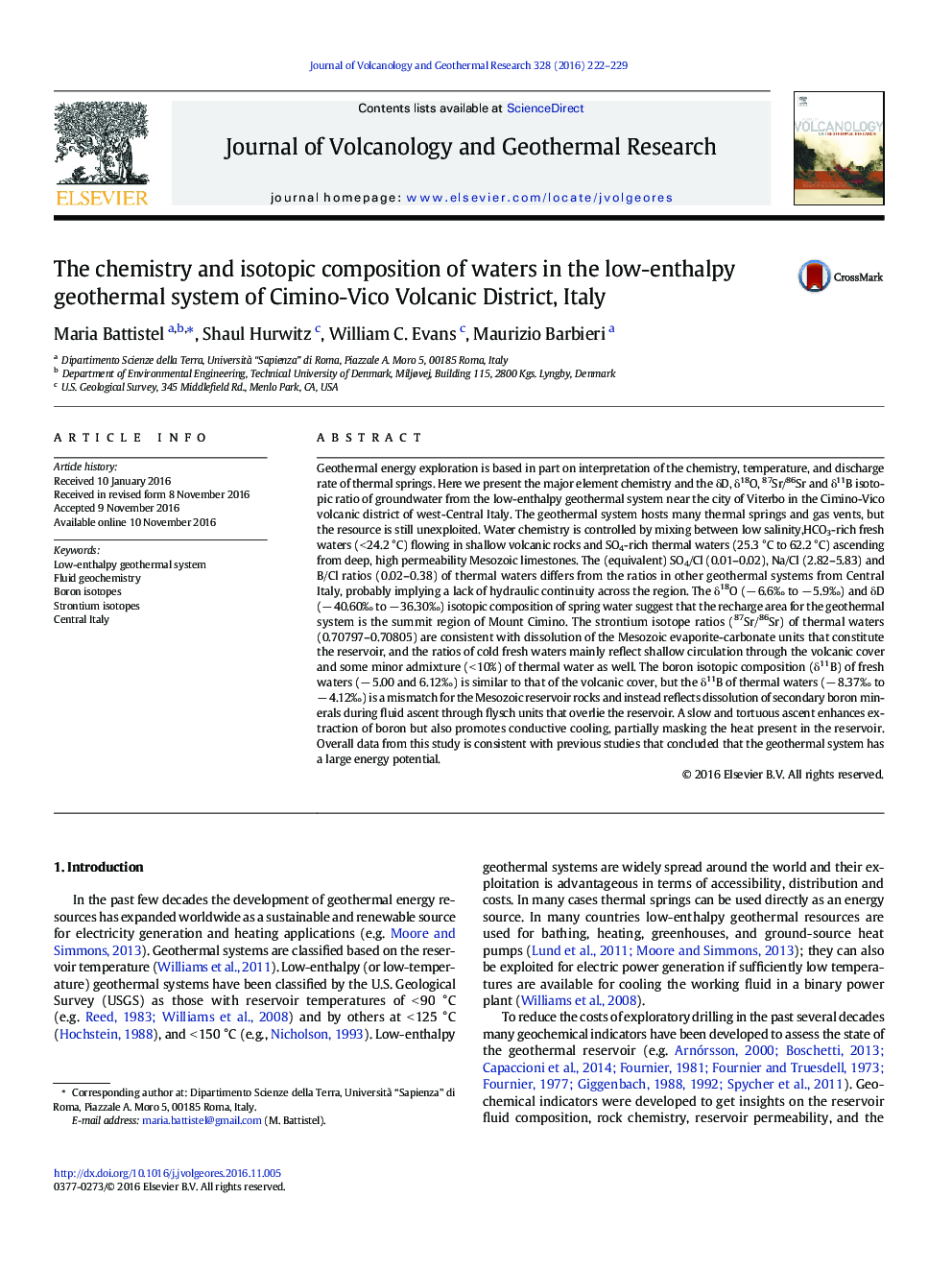| کد مقاله | کد نشریه | سال انتشار | مقاله انگلیسی | نسخه تمام متن |
|---|---|---|---|---|
| 5783920 | 1638294 | 2016 | 8 صفحه PDF | دانلود رایگان |
عنوان انگلیسی مقاله ISI
The chemistry and isotopic composition of waters in the low-enthalpy geothermal system of Cimino-Vico Volcanic District, Italy
دانلود مقاله + سفارش ترجمه
دانلود مقاله ISI انگلیسی
رایگان برای ایرانیان
کلمات کلیدی
موضوعات مرتبط
مهندسی و علوم پایه
علوم زمین و سیارات
ژئوشیمی و پترولوژی
پیش نمایش صفحه اول مقاله

چکیده انگلیسی
Geothermal energy exploration is based in part on interpretation of the chemistry, temperature, and discharge rate of thermal springs. Here we present the major element chemistry and the δD, δ18O, 87Sr/86Sr and δ11B isotopic ratio of groundwater from the low-enthalpy geothermal system near the city of Viterbo in the Cimino-Vico volcanic district of west-Central Italy. The geothermal system hosts many thermal springs and gas vents, but the resource is still unexploited. Water chemistry is controlled by mixing between low salinity,HCO3-rich fresh waters (< 24.2 °C) flowing in shallow volcanic rocks and SO4-rich thermal waters (25.3 °C to 62.2 °C) ascending from deep, high permeability Mesozoic limestones. The (equivalent) SO4/Cl (0.01-0.02), Na/Cl (2.82-5.83) and B/Cl ratios (0.02-0.38) of thermal waters differs from the ratios in other geothermal systems from Central Italy, probably implying a lack of hydraulic continuity across the region. The δ18O (â 6.6â° to â 5.9â°) and δD (â 40.60â° to â 36.30â°) isotopic composition of spring water suggest that the recharge area for the geothermal system is the summit region of Mount Cimino. The strontium isotope ratios (87Sr/86Sr) of thermal waters (0.70797-0.70805) are consistent with dissolution of the Mesozoic evaporite-carbonate units that constitute the reservoir, and the ratios of cold fresh waters mainly reflect shallow circulation through the volcanic cover and some minor admixture (< 10%) of thermal water as well. The boron isotopic composition (δ11B) of fresh waters (â 5.00 and 6.12â°) is similar to that of the volcanic cover, but the δ11B of thermal waters (â 8.37â° to â 4.12â°) is a mismatch for the Mesozoic reservoir rocks and instead reflects dissolution of secondary boron minerals during fluid ascent through flysch units that overlie the reservoir. A slow and tortuous ascent enhances extraction of boron but also promotes conductive cooling, partially masking the heat present in the reservoir. Overall data from this study is consistent with previous studies that concluded that the geothermal system has a large energy potential.
ناشر
Database: Elsevier - ScienceDirect (ساینس دایرکت)
Journal: Journal of Volcanology and Geothermal Research - Volume 328, 15 December 2016, Pages 222-229
Journal: Journal of Volcanology and Geothermal Research - Volume 328, 15 December 2016, Pages 222-229
نویسندگان
Maria Battistel, Shaul Hurwitz, William C. Evans, Maurizio Barbieri,